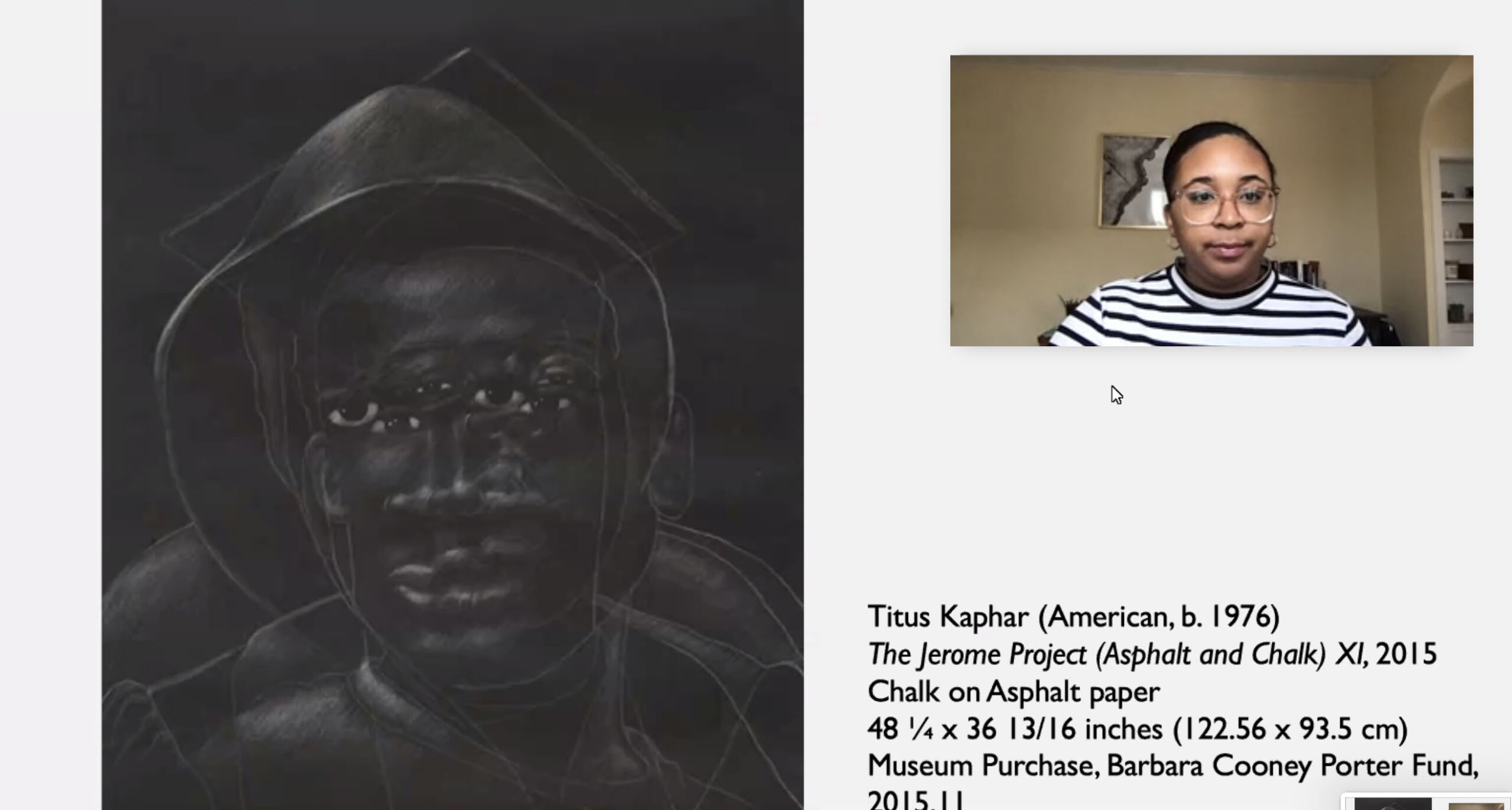Museum webinar links visual art to anti-racist work
September 18, 2020

Claire Traum ’21 and Lucy Siegel ’22, two members of the Bowdoin College Museum of Art Advisory Council, developed the idea after gaining experience with webinars during summer opportunities.
“Given the unique structure of this coming year, Lucy had the great idea of creating a webinar series where students could connect with the Museum through a webinar that zoomed in on a specific object in the Museum, and then [we] pulled in professors and students who are passionate about the topic,” said Traum.
Typically, the BCMA offers various lectures and events for students, staff and faculty to come together to discuss art throughout the school year. This webinar hopes to replicate an experience similar to events typically offered during normal times.
Curatorial Assistant and Manager of Student Programs Elizabeth Humphrey ’14 and Andrew W. Mellon Postdoctoral Curatorial Fellow Sean Burrus hosted the webinar, and the conversation ranged from a discussion about an icon with St. Peters to a dialogue around “The Jerome Project,” an art installation by contemporary artist Titus Kaphar highlighting the inhumanity of and racial disparity in incarceration. Throughout the webinar, Burrus and Humphrey highlighted the Museum’s connection to protest art and the Black Lives Matter movement.
“We’re focusing on how art can connect to racial injustice and protest art in general—especially how it can connect to the Museum—for this first conversation,” said Humphrey in a Zoom interview with the Orient.
“The Museum is playing host to these [conversations], but we’re not the face of them. It is the student body and faculty members on campus and sometimes us who are the face of it. The Museum is happy to play host to any conversation on campus that has to do with art,” added Burrus in a Zoom interview with the Orient.
During a time when less than half of the student body is on campus, Traum believes that virtual events are necessary for creating community at a distance.
“I think we have such an incredible resource, and I feel that even in normal times the Museum is not necessarily taken advantage of,” said Traum. “At a time when we’re having trouble accessing campus, this is another way to connect with something that’s a very big piece of the community.”
The topics of the upcoming webinars have not all been solidified, but the Museum is tracking student and faculty feedback as they continue the project’s curation.
“The way that this episode came about is in response to student-solicited feedback, so all of the webinar episodes coming up this semester [will be] based on student feedback,” said Humphrey.
The next webinar will be on Wednesday, September 30. Kate Gerry, visiting assistant professor of art history, will explore her recent exhibition, “New Views of the Middle Ages: Highlights from the Wyvern Collection,” now on view virtually at the BCMA.

Comments
Before submitting a comment, please review our comment policy. Some key points from the policy: